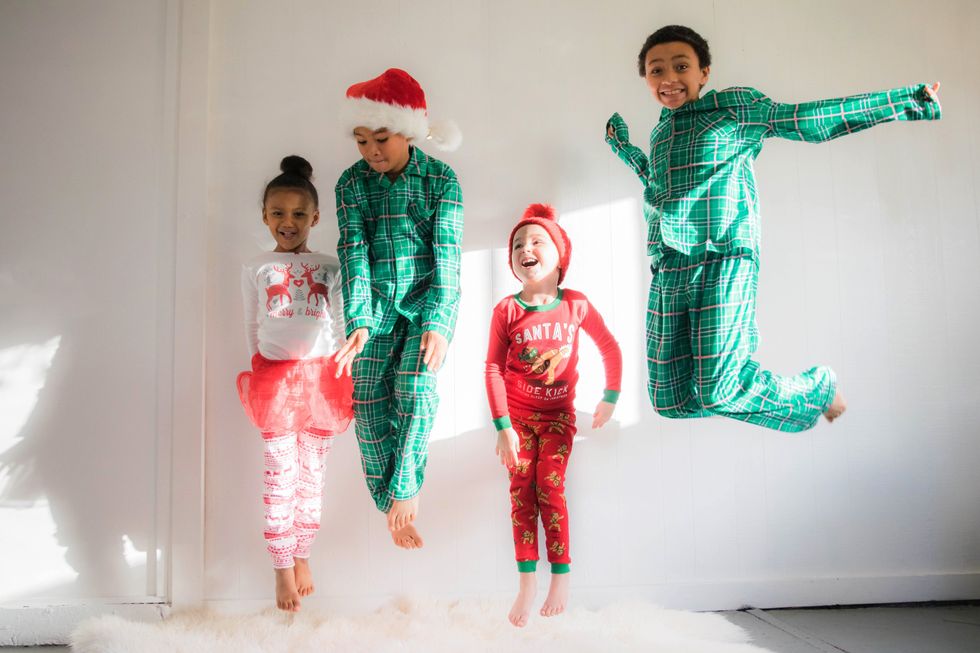As an 18-year-old with an alarming addiction to Disney movies, when I saw the first announcement about the anticipated "Finding Nemo" sequel, of course, my inner child was screaming. I begged my boyfriend MONTHS in advance to take me and, in all honesty, knew the release date by heart. Dory had stolen my heart back in 2003, and the fact that we were to be reunited by the silver screen once again was too much to handle. Finally, when I sat clad with a bucket of extra buttery popcorn and my large Dr. Pepper, I was overcome with emotion by Disney’s latest addition. Not because baby Dory and her abnormally adorable eyes were just too cute (although they were), but because "Finding Dory" so beautifully represented the diversity of Special Needs through the entirely of its hour-and-45 minutes. Tears welled in my eyes. They had finally done it. In a society that is too uncomfortable to start the conversation about disabilities, who would rather those with Special Needs be kept ‘hush, hush’ rather than educate our culture on disability, Disney has used its popularity as a platform, reaching out to an audience of ignorance and educating them, becoming a voice for those with Special Needs and their Caregivers.
A Variety of Disabilities Where Represented.
By incorporating the Marine Life Institute Rehabilitation Center, "Finding Dory"’s audience was introduced and fell in love with, a range of characters with challenges of their own. Although we were well aware of Dory’s “short term mem-mem-memory loss,” "Finding Dory" introduced characters such as Destiny and showed her struggle to accommodate with her near sidedness. We also met Hank, who had a tentacle amputated, Gerald and Becky, who have mental disabilities although not listed. And of course, our lovable Nemo, who was born with a physical disability, his fin. By showing a variety of disabilities through its characters, physical, mental, and social, "Finding Dory" showed its audience that disabilities are not cut and dry, and each come with its own set of challenges and accommodations.
Illustrates the Underestimation of Society
Throughout "Finding Dory," Marlin, although he loves her, continuously underestimates Dory and what she is capable of due to her disability. Some of the characters, such as Bailey, who believes he cannot use his sonar due to an accident, also underestimate what they are capable of due to the underestimation of those around them. Sadly, "Finding Dory"’s plot parallels what happens far too often not only in our Special Needs students in our school systems (yes I am a Special Education major), but everyday life for those with Special Needs. Not only are they limited by their disability, but they often have a lack of support from others who underestimate their strengths.
Praises The Hardworking Caregivers!By introducing their audience to Dory’s family, "Finding Dory" showed that not only are those with Special Needs having to learn and accommodate in new ways, but their loved ones and caregivers are on this journey too. When we meet sweet little baby Dory, her parents are teaching her rhymes and songs to remember important things like where she lives and ways to be safe in the sea. Caregivers instantly become advocates for their loved ones, like Dory’s Parents, and we see the damage not having advocates can do when Dory becomes lost in the sea. When approached by strangers who do not understand her disability, Dory is unable to explain due to her short-term memory and left wandering the ocean. Caregivers help educate, advocate, and are pivotal to the lives of their loved ones. So to the Caregivers out there like, Marlin, Charlie, and Jenny… you rock!
We Learn What It Truly Means to “Just Keep Swimming”
In "Finding Nemo," Dory’s catchy tune seemed like a fun little jive meant to sell a few t-shirts, but after "Finding Dory" I feel like the song has been given a new meaning entirely. No matter what happens to Dory, when she finds herself alone, when she gets so frustrated with herself when she can’t remember when those around her just don’t understand, she really does keep on swimming. She never quits despite the limitations her disability has placed on her, but she just keeps swimming until she can find a way, HER WAY, to do what she needs to do. Hence, the trend of WWDD (What would Dory do). Yes, it may vary from how Marlin would do it, or Nemo, or her parents, but that’s honestly the beauty of it because Dory is able to succeed just like everyone else by approaching a task in a way she knows she can accomplish it even when it isn’t conventional.
I think that’s what our culture is missing. We aren’t able to recognize the beauty of what it means to “just keep swimming.” We’re so worried about ‘right’ and ‘wrong,’ ‘normal’ and ‘not normal’, and placing people and tasks into these boxes of productivity, so when those with Special Needs have to accommodate in a way different from our own, we have trouble accepting it. Rather, we make them outcasts and underestimate them, just as the sea had with Dory and her friends, instead of learning from them and their ability to provide a unique insight into the world. With this truly incredible film, I really hope Disney sparked the conversation about Special Needs in its audience so that someday ignorance will no longer be an excuse and we can all appreciate and accept Special Needs in our culture. And until then, we’ll just keep swimming.



 StableDiffusion
StableDiffusion
























